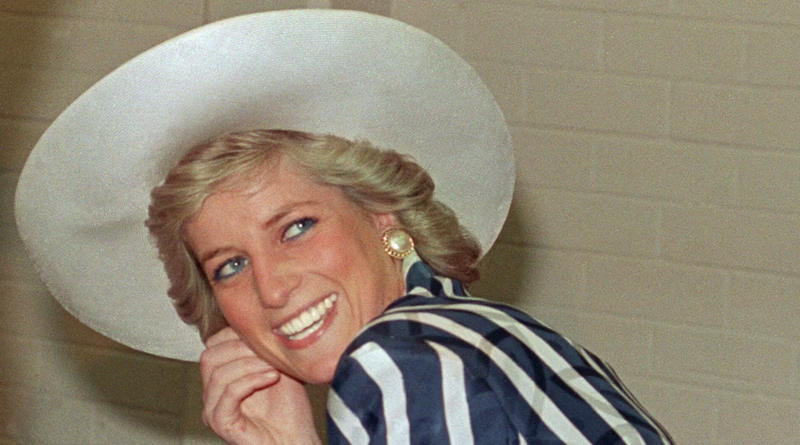The Charisma of Princess Diana

Princess Diana, born Diana Frances Spencer on July 1, 1961, and tragically passing on August 31, 1997, remains one of the most iconic figures of the 20th century. Known as the “People’s Princess,” her charisma captivated the world, blending grace, compassion, and relatability in a way that transcended her royal status. Diana’s magnetic presence stemmed from her ability to connect with people across social divides, her commitment to humanitarian causes, and her defiance of royal conventions, all while navigating intense public scrutiny and personal challenges. Her charm was not merely superficial; it was rooted in authenticity, emotional intelligence, and a genuine desire to effect change. This long topic explores the facets of Diana’s charisma—her early life, public persona, humanitarian work, media influence, personal struggles, and enduring legacy—drawing from historical accounts and public records to illustrate why she remains a global symbol of empathy and inspiration.
Diana was born into the aristocratic Spencer family at Park House, Sandringham, Norfolk, England, with ties to the British monarchy through her lineage. Her father, John Spencer, was the 8th Earl Spencer, and her mother, Frances, came from a prominent family. Raised alongside siblings Sarah, Jane, and Charles, Diana’s childhood was marked by privilege but also personal turmoil, including her parents’ divorce in 1969, which left her sensitive to emotional pain and fostered her empathetic nature. Educated at boarding schools like Riddlesworth Hall and West Heath, she excelled in sports and music but struggled academically, leaving school without qualifications. Her early jobs as a nanny, kindergarten aide, and dance instructor in London revealed her love for children and accessibility, traits that later defined her public image.
At 16, Diana met Prince Charles,heir to the British throne, through her sister Sarah, who briefly dated him. Their courtship began in 1980, and Charles proposed in February 1981. At 19, Diana’s shy smile and youthful charm captivated the media, earning her the nickname “Shy Di.” Her engagement ring, a 12-carat sapphire, became iconic, and their July 29, 1981, wedding at St. Paul’s Cathedral, watched by 750 million globally, cemented her as a global figure. Diana’s natural warmth—seen in her nervous giggles during interviews and genuine interactions—made her instantly relatable, setting the stage for her charismatic ascent.

The People’s Princess
Diana’s charisma was rooted in her ability to humanize the monarchy. Unlike the stoic royal demeanor, she was approachable, often kneeling to speak with children, hugging hospital patients, or engaging crowds with humor. Her fashion choices—elegant gowns, the “revenge dress,” and casual jeans—made her a style icon, blending glamour with relatability. Her 1983 tour of Australia and New Zealand with Charles showcased her star power; crowds flocked to see her, and her ease with locals outshone the reserved prince, sparking media frenzy.
This openness, rare for royalty, made her a figure of empathy, earning her the “People’s Princess” title, coined by Prime Minister Tony Blair after her death.
Humanitarian Work
AIDS Advocacy: In 1987, at the height of AIDS stigma, Diana opened the UK’s first AIDS ward at Middlesex Hospital, famously shaking hands with patients without gloves, dispelling myths about transmission. Her words, “HIV does not make people dangerous to know,” shifted public attitudes.

Landmine Campaign: In 1997, Diana walked through an active minefield in Angola with the Halo Trust, spotlighting the global landmine crisis. Her advocacy pressured governments, contributing to the 1997 Ottawa Treaty banning anti-personnel mines.
Media Influence: The Double-Edged Sword
The paparazzi’s obsession, however, was relentless, contributing to her tragic death. Her ability to manipulate media—leaking stories to shape narratives—showed her savvy, but the constant intrusion eroded her privacy, a paradox of her charisma’s power.
Death of Lady Diana

On August 31, 1997, Diana died in a car crash in Paris’ Pont de l’Alma tunnel, alongside Dodi Fayed and driver Henri Paul, pursued by paparazzi. The crash, attributed to Paul’s intoxication and high speed, sparked global grief. Her funeral on September 6, 1997, drew 2.5 billion TV viewers, with millions lining London streets. Elton John’s rewritten “Candle in the Wind” became a tribute anthem. Conspiracy theories—alleging royal or intelligence involvement—persisted, but a 2008 inquest confirmed an accidental death.
Diana’s charisma reshaped the monarchy, making it more accessible. The Diana, Princess of Wales Memorial Fund, established post-death, supported charities until 2012, raising £138 million. Her sons continue her work through initiatives like Heads Together. Her fashion, archived in exhibitions, and her story, dramatized in The Crown and Spencer, keep her alive in popular culture.
Princess Diana’s charisma was a unique blend of authenticity, compassion, and defiance of tradition. Her ability to connect with the marginalized, navigate media, and share her vulnerabilities made her a global icon. Her legacy endures in humanitarian work, cultural influence, and her sons’ advocacy, ensuring her charisma inspires generations. For further study, explore biographies like Andrew Morton’s or the Diana Memorial Fund archives. If you’d like a deeper dive into specific aspects, like her fashion or AIDS work, let me know!

